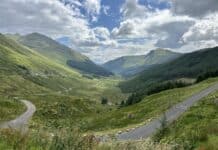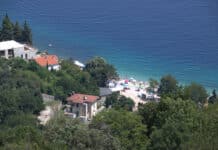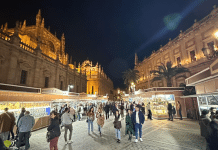If you love nature, then you will love Alderney!
On a recent visit to this, the most northern of the inhabited Channel Islands, I discovered a wide variety of unique plants and wildlife together with a dramatic landscape that attracts not only inquisitive tourists like me but also migratory birds from far and wide.
From its marine life to its coastal cliffs, sandy beaches, sprawling heathland and scrub woodland to its freshwater ponds, Alderney has so much to enjoy.
The Alderney Wildlife Trust
Much of the credit for the management of the island’s wildlife and habitats goes to the team and conservation volunteers at the Alderney Wildlife Trust who are this year celebrating their 20th anniversary. The trust oversees over 130 hectares of land, which is quite a feat considering the island is only 800 hectares in size.
They also manage the island’s nature reserves as well as the 20km of footpaths, which need to balance public access, whilst minimising the impact on the wildlife that lives there.
The Wildlife Trust Centre and shop are based in the heart of the island’s only town, St Anne, and it’s well worth a visit. The friendly welcoming team will offer their expert advice on every aspect of the island, plus they can help you choose between a selection of organised excursions from walking tours to boat trips.
Outside, I particularly liked the chalkboard showcasing the latest wildlife sightings which added to the sense of excitement for those, like me, who were getting ready to head out and explore.
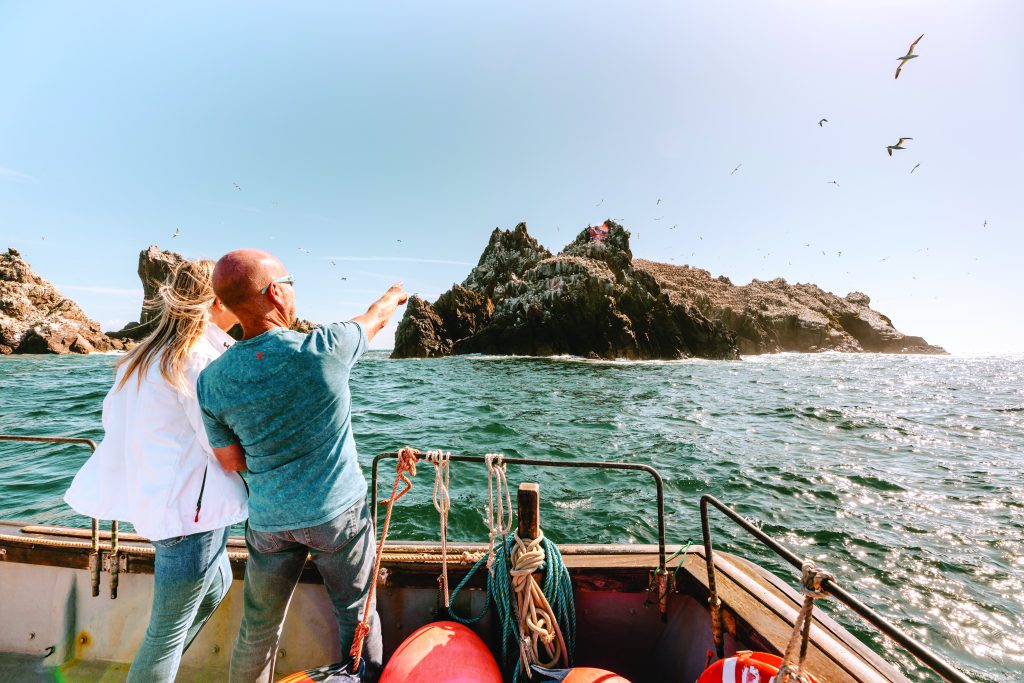
Walks and Trails
Walking is by far the best way to discover Alderney.
Together with your sturdy walking boots, all-weather attire, binoculars and camera, I recommend you pick up a map and a copy of the informative “Alderney Self-Guided Walks” brochure from the Visitor Information Office. The suggested routes range from easy to difficult and are designed for walkers of all ages and abilities so there is no excuse to get out and explore!
Alderney’s Nature Reserves
Created by the Alderney Wildlife Trust in 2003, the Longis Reserve is Alderney’s largest, covering an area of approximately 100 hectares of public and private land. It is located on the southeast coast and has thirteen very different habitats within which there are dozens of rare species of plant. The Longis Pond and Reed bed, one of only two freshwater pond habitats on the island, is a great place to observe waterfowl, dragonflies, and damselflies from the delightful wooden hide. The reserve also benefits from its conservation grazing herd of cattle which is a traditional method of managing the coastal grassland without the use of heavy machinery. The reserve also extends into the marine environment with its eelgrass beds, rock pools and reefs that are home to sea anemones, kelp, sea urchins, and ormer.
Val du Saou Reserve is located on the southwest coast of Alderney and covers approximately 6 hectares. Here you will find the Wildlife Bunker (Countryside Interpretation Centre) which is set within a converted World War Two German bunker. Information is provided here on both the island’s military and wildlife history. This is a great place to stop to observe the spectacular habitat and seabirds from the observation point. Interestingly it is also home to the island’s only wooded valley.

RAMSAR Wetland Site & Offshore Islands
A Ramsar site is a wetland area considered to be of international importance, and the Channel Islands are now home to eight of these sites. Officially recognised by the United Nations in 2005, Alderney’s west coast and the Burhou Islands Ramsar site was the first in the Bailiwick of Guernsey.
This area is incredibly popular for birdwatchers who come to Alderney all year round to view species particular to the island, as well as those who are seasonal visitors. The island is perhaps best known for being home to about 1% of the world’s breeding population of Northern Gannets. These birds are best seen, often in huge numbers, on the rocky outcrop called Les Etacs on the southwest of the island.
The small islet of Burhou is two miles northwest of Braye Harbour and home to colonies of puffins and storm petrels as well as black-backed gulls and grey seals. The best time to see the puffins is between March and early July when regular local boat trips are running. The gannets are best viewed between late January and October either up close on a boat trip, from the South Cliffs, or through the steep-sided Valée des Trois Vaux just off the coastal path.
Alderney’s Flora
The island is of particular interest to botanists and naturalists who come to enjoy the rich flora and fauna. Whilst trees are scarce, Alderney is one of the British Isles’ top destinations for wildflowers with over 900 species of plants across the entire island.
Two of the rarest to look out for are the Alderney Sea Lavender and the Alderney Geranium and in the Longis Reserve keep your eyes peeled for rare UK species such as Sand Crocus, Small Hare’s-ear, Scrambled Egg lichen, Small Restharrow, Small-flowered Catchfly and Yarrow Broomrape. A walk almost anywhere on Alderney in spring and early summer will give you resplendent displays of common species such as Thrift, Bird’s-foot Trefoil, Pyramidal Orchid and Eyebright.
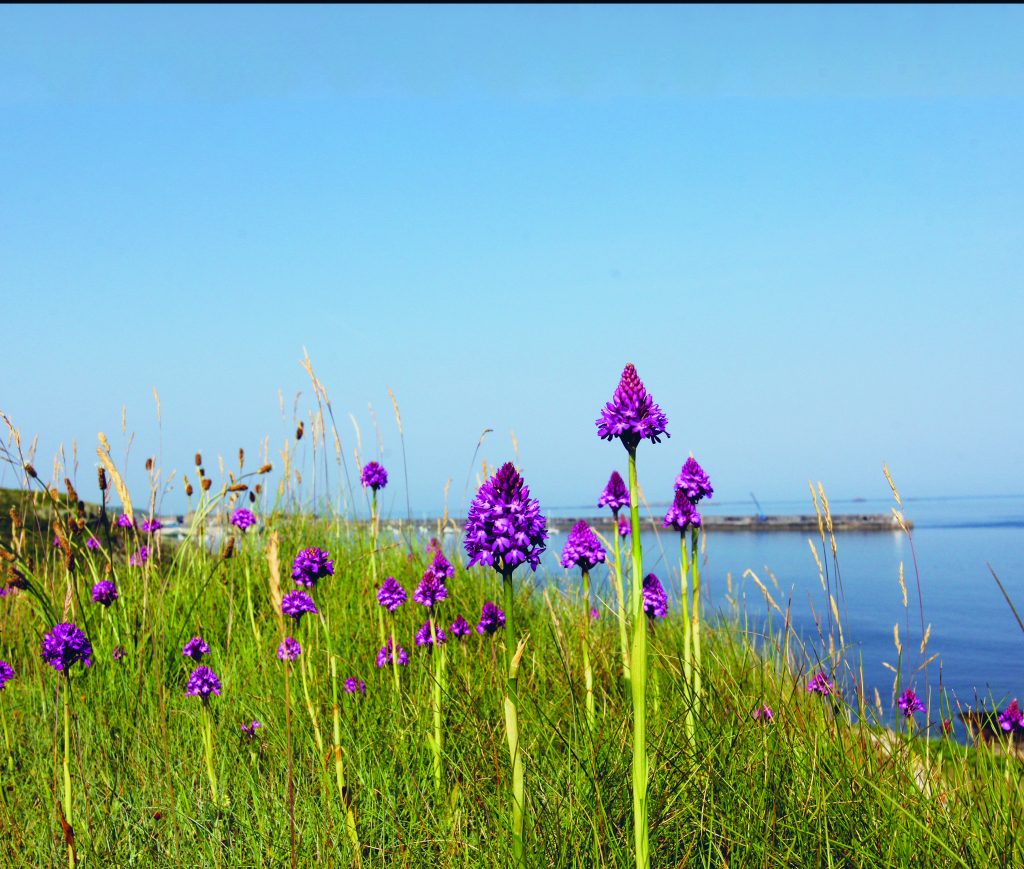
Wildlife At a Glance
Alderney is better known for its birds than its mammals, however, there are some notable species which thrive, largely due to the lack of predators.
The Blonde Hedgehog is a favourite. The story goes that a couple of breeding pairs of western European hedgehogs were brought as pets to the island in the 1960s with one pair reputedly coming from Harrods – these aren’t just any old Hedgehogs! Due to their unique lineage, and the peculiarities of island life, more than half of the island’s hedgehog population today is now blonde. Anyone willing to take an evening stroll can expect to observe these unique animals foraging for food in the back gardens and side streets of St Anne. If you fancy an evening excursion then the Alderney Wildlife Trust run their popular “Hedgehog & Bat Walk”, or Alderney Tours has an “After Dark Safari”.
The little-known Greater, White-toothed shrew, which can’t be found on mainland Britain, can be difficult to spot however you might hear its high-pitched squeaks as you walk through Longis Common.
There are now eleven species of bat recorded on Alderney, with some hanging out in the island’s old bunkers only venturing out at dusk to feed on insects.
There is just one reptile on the island and that is the Slow Worm. This legless lizard is popular with gardeners as they prey on slugs and snails.
If you are a lover of Butterflies, Moths, and Insects then Alderney boasts a population as good as anywhere on the British Mainland. Red Admirals and Tortoiseshells are the butterflies I always remember as a child and you will see these aplenty. If you are visiting between May and June, look out for the more unusual Green Hairstreak or the Glanville Fritillary. Moth species include Convolvulus, Elephant, Privet and Hummingbird Hawkmoths.
As everywhere in the world, Bees are such an important part of our ecosystem and on Alderney, there are several species including the Scilly Bee named after the island where it originated.
Marine Mammals
The waters around the Channel Islands are home to several significant populations of Bottlenose and Common dolphins with the occasional rarity being spotted including the Risso dolphin. Basking sharks have also been spotted off Alderney’s coast along with Grey Seals.
Bird Life
If you are a bird watcher then Alderney is a must!
The noisy Northern Gannets and gentle Puffins are for many the star attraction but for those in the know, there are many more species attracted to Alderney by the variety of habitats.
Seabirds visiting include Razorbill, Guillemot, Cormorant, Common Terns, Shag, Herring Gull, Manx Shearwater, and the European Storm Petrel.
Migratory birds include waders, chats, warblers, flycatchers, wagtails, thrushes, finches, and cuckoos. The rocky bays and sandy beaches entice breeding waders such as Oystercatchers, Dunlin, Redshank, and Ringed Plover while the marine heathland attracts Linnet, Skylark, Whitethroat, Ring Ouzel and Redstart.
Some of the birds that remain resident all year include Raven, Peregrine Falcon, and Rock Pipit.
Alderney For All Seasons
As a useful little guide, I wanted to showcase some of the seasonal highlights because I have a feeling you will fall in love with Alderney and will want to return to appreciate the island at a different time of the year.
Spring (March to May)
From mid-March, Alderney comes alive as the northbound bird migration will be in full swing and the island will be decorated with colourful flowers and fresh new life.
In April, thousands of Northern Gannets gather on Les Etacs and Ortac at the start of their breeding season while a couple of hundred pairs of Puffins arrive on the island of Burhou.
Blonde Hedgehogs start to breed with litters emerging in May. Butterflies including the Painted Lady that migrate from Africa and the Glanville Fritillary start to emerge, as do bats and insects.
Summer (June to August)
As Spring turns to summer, butterflies, moths and dragonflies will be on the wing while the seabirds such as the Northern Gannets will be on their offshore nests feeding fish to their young. Rockpools are brimming with life including anemones, fish, prawns, sea urchins and crabs.
In early June check out Bloomin’ Alderney, a week where you can enjoy some of Alderney’s most picturesque gardens.
By late July the Puffins will have departed.
In early August the biggest event in the Channel Islands, Alderney Week, takes place with numerous events showcasing all that is special about this magical little island.
Autumn (September to November)
Autumn offers the final chance to see some of Alderney’s transient inhabitants with migratory birds such as swallows, warblers, and starlings stopping off en route south for the winter.
In September young Gannets are fledging and preparing to leave the colony on Les Etacs and Ortac.
If you want to see one of those blonde hedgehogs before they hibernate then be sure to do so before the middle of December.
Winter (December to February)
Winter on Alderney is special. For many, it’s their favourite time to visit the island as it’s raw, wild, and intimate.
The rocky bays and sandy beaches attract large numbers of wading birds including Turnstone, Dunlin and Oystercatcher.
Christmas on the island is a delight and a time to celebrate all that is unique about Alderney. As the crisp cold mornings take us into the New Year thoughts turn to those migratory birds which are making plans to head to the island in February and March.

At One With Nature In Alderney
The breathtaking beauty of Alderney will leave you feeling re-connected with nature. Spending time outdoors witnessing wildlife and glorious vistas will leave you energised, inspired and above all happy that there are corners of this world that still deliver that simple feel-good factor.
I have only recently returned from the island and have a burning desire to return one day soon.
Without question, I am wild about Alderney, and I am sure you will be too! Have a wonderful visit.
Contact Information
Read more about my visit to Alderney, United Kingdom in my recent blog “All About Alderney“.
For more information about the island, its wildlife as well as places to stay check out the Visit Alderney website.


